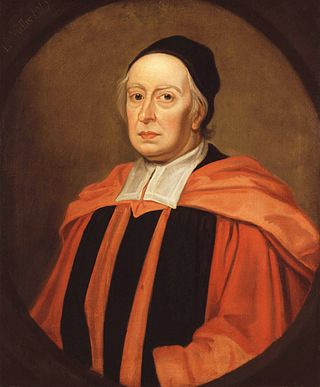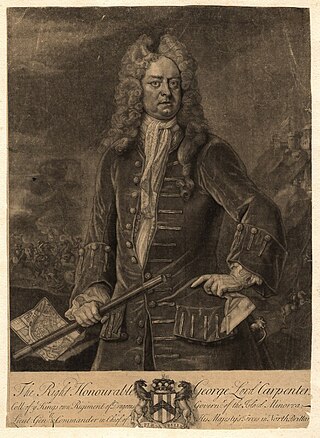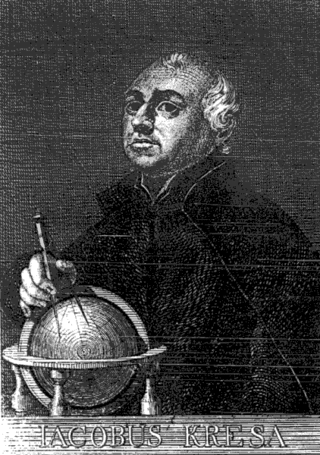Related Research Articles

The history of mathematics deals with the origin of discoveries in mathematics and the mathematical methods and notation of the past. Before the modern age and the worldwide spread of knowledge, written examples of new mathematical developments have come to light only in a few locales. From 3000 BC the Mesopotamian states of Sumer, Akkad and Assyria, followed closely by Ancient Egypt and the Levantine state of Ebla began using arithmetic, algebra and geometry for purposes of taxation, commerce, trade and also in the patterns in nature, the field of astronomy and to record time and formulate calendars.

John Playfair FRSE, FRS was a Church of Scotland minister, remembered as a scientist and mathematician, and a professor of natural philosophy at the University of Edinburgh. He is best known for his book Illustrations of the Huttonian Theory of the Earth (1802), which summarised the work of James Hutton. It was through this book that Hutton's principle of uniformitarianism, later taken up by Charles Lyell, first reached a wide audience. Playfair's textbook Elements of Geometry made a brief expression of Euclid's parallel postulate known now as Playfair's axiom.

Nicholas Saunderson was a blind English scientist and mathematician. According to one historian of statistics, he may have been the earliest discoverer of Bayes' theorem. He worked as Lucasian Professor of Mathematics at Cambridge University, a post also held by Isaac Newton, Charles Babbage and Stephen Hawking.

George Peacock FRS was an English mathematician and Anglican cleric. He founded what has been called the British algebra of logic.

John Wallis was an English clergyman and mathematician who is given partial credit for the development of infinitesimal calculus. Between 1643 and 1689 he served as chief cryptographer for Parliament and, later, the royal court. He is credited with introducing the symbol ∞ to represent the concept of infinity. He similarly used 1/∞ for an infinitesimal. John Wallis was a contemporary of Newton and one of the greatest intellectuals of the early renaissance of mathematics.

Nathaniel Bliss was an English astronomer of the 18th century, serving as Britain's fourth Astronomer Royal between 1762 and 1764.

New Mathematics or New Math was a dramatic but temporary change in the way mathematics was taught in American grade schools, and to a lesser extent in European countries and elsewhere, during the 1950s–1970s. Curriculum topics and teaching practices were changed in the U.S. shortly after the Sputnik crisis. The goal was to boost students' science education and mathematical skills to compete with Soviet engineers, reputedly highly skilled mathematicians.

Sir John Leslie, FRSE KH was a Scottish mathematician and physicist best remembered for his research into heat.

The Mathematical Institute is the mathematics department at the University of Oxford in England. It is one of the nine departments of the university's Mathematical, Physical and Life Sciences Division. The institute includes both pure and applied mathematics and is one of the largest mathematics departments in the United Kingdom with about 200 academic staff. It was ranked as the top mathematics department in the UK in the 2021 Research Excellence Framework. Research at the Mathematical Institute covers all branches of mathematical sciences ranging from, for example, algebra, number theory, and geometry to the application of mathematics to a wide range of fields including industry, finance, networks, and the brain. It has more than 850 undergraduates and 550 doctoral or masters students. The institute inhabits a purpose-built building between Somerville College and Green Templeton College on Woodstock Road, next to the Faculty of Philosophy.

Augustus De Morgan was a British mathematician and logician. He formulated De Morgan's laws and introduced the term mathematical induction, making its idea rigorous.
A timeline of algebra and geometry
Elizabeth Tollet was a British poet. Her surviving works are varied; she produced translations of classical themes, religious and philosophical poetry and poems arguing for women's involvement in education and intellectual pursuits such as natural philosophy. Unusually, for a woman of her time, her poetry also includes Newtonian imagery and ideas. Some of her poetry imitates the Latin verse of Horace, Ovid, and Virgil. In some of her poems, Tollet paraphrases the Psalms.

Lieutenant-General George Carpenter, 1st Baron Carpenter was a British Army officer, Whig politician and peer. He served as Commander-in-Chief, Scotland from 1716 to 1724 and as a member of parliament from 1715 to 1727.
John Senex was an English cartographer, engraver and explorer.

Jakub Kresa was a Czech mathematician. He was one of the most important Czech mathematicians of the Baroque era.
Mathematics is a field of study that investigates topics such as number, space, structure, and change.
Mathematics is a broad subject that is commonly divided in many areas that may be defined by their objects of study, by the used methods, or by both. For example, analytic number theory is a subarea of number theory devoted to the use of methods of analysis for the study of natural numbers.
A mathematical exercise is a routine application of algebra or other mathematics to a stated challenge. Mathematics teachers assign mathematical exercises to develop the skills of their students. Early exercises deal with addition, subtraction, multiplication, and division of integers. Extensive courses of exercises in school extend such arithmetic to rational numbers. Various approaches to geometry have based exercises on relations of angles, segments, and triangles. The topic of trigonometry gains many of its exercises from the trigonometric identities. In college mathematics exercises often depend on functions of a real variable or application of theorems. The standard exercises of calculus involve finding derivatives and integrals of specified functions.
John Caswell was an English mathematician who served as Savilian Professor of Astronomy at the University of Oxford from 1709 until his death.
Robert Baldwin Hayward was an English educator and mathematician.
References
- 1 2 Londry, Michael (September 2004). Tollet, George (d. 1719). Vol. Oxford Dictionary of National Biography. Oxford University Press . Retrieved 17 October 2009. (library card access)
- 1 2 Londry, Michael (September 2004). Tollet, Elizabeth (1694–1754). Vol. Oxford Dictionary of National Biography. Oxford University Press . Retrieved 17 October 2009. (library card access)
- ↑ "Royal Society Library and Archive Catalogue". Royal Society. Retrieved 28 October 2010.[ permanent dead link ]
- ↑ Gilbert, J. T. (1859). "IV". History of the City of Dublin. Vol. II. M'Glashan and Gill. ISBN 0-7171-0942-9. Archived from the original on 12 September 2011. "I must confess, we have been lately something idle-and several of our meetings have been employed by a young mathematical female in this place, bred up by one Mr. Tollet, a teacher of mathematics, and a most excellent learned man in that kind. The child is not yet eleven, and yet she hath given sufficient proofs of her learning in arithmetic, the most abstruse parts, algebra, geometry, trigonometry plane and spherical, the doctrine of the globes, chronology, and on the violin plays anything almost at sight. As this is a most plain instance of the force and power of timely education, and of the reach that man has naturally, we have thought it worth our while to consider and examine it thoroughly; and indeed we find, at least, that the child seems to have no more natural inclination or delight in these things than ordinarily amongst children."